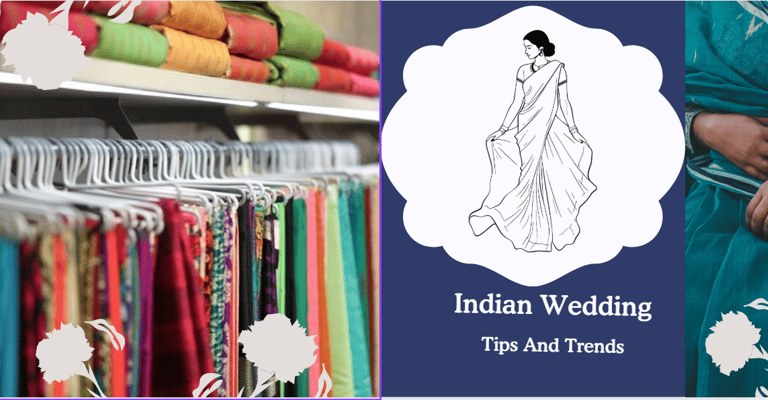Essential Guide To Dressing For An Indian Wedding
Guide To Indian Wedding
LIFESTYLELIFESTYLE LATEST NEWS
12/13/20243 min read


Attending an Indian wedding as a guest is a unique and beautiful experience, and one of the first things you'll likely think about is, “What should I wear?” With Indian wedding attire being intricately designed and often tailored to reflect cultural significance, this is a common concern. Experts recommend that the moment you receive your save-the-date, you should start preparing your outfit to honor the traditions and participate fully in the celebrations.
Understanding the cultural nuances of wedding attire is crucial. It’s not just about picking something beautiful but something that resonates with the culture. For instance, understanding the sari—its symbolism, the draping technique, and how to walk in one—is essential. Wearing a sari or lehenga, which are staples in Indian wedding fashion, is an expression of respect and appreciation for the cultural significance.
Traditional attire is paramount when attending an Indian wedding. Women typically wear saris, lehengas, or Anarkali suits, while men often wear sherwanis or kurtas paired with traditional accessories like churidars.
The type of outfit can vary depending on the region, so it’s always good to confirm the specific dress code. However, most guests stick to traditional choices, with a sari being a timeless and flattering option, especially when draped correctly.
Indian weddings are an opportunity to go all out with glam. Traditional wear often involves hand-embroidered details and luxurious fabrics like silk or chiffon. Accessorizing is a key part of the look—statement jewelry, including bangles, necklaces, and earrings, is common, along with a tikka headpiece to complete the outfit. Even though the attire can be extravagant, it’s all about fitting into the atmosphere of the wedding and honoring the couple's vision.
On the flip side, there are certain things to avoid when dressing for an Indian wedding. While it’s important to follow the wedding’s dress code, there are some rules of etiquette. For example, avoid wearing red, which is traditionally the color of the bride, as well as black and white, which are associated with mourning. Bold, bright colors are also less common in modern Indian weddings, with more subtle pastels being preferred for a softer, more romantic look.
Comfort is another factor to consider when dressing for an Indian wedding, especially since there will likely be lots of dancing and long hours. Indian attire, such as lehengas or saris, can be heavy, so choosing something that allows freedom of movement is key.
If you're attending pre-wedding events like a haldi, mehndi, or sangeet, these tend to be less formal, but still require thoughtful, respectful dressing. For these occasions, cottons or linens are often preferred, and lighter, more comfortable outfits are common.
When it comes to shopping for your wedding attire, the best advice is to start early, especially since much of the clothing is custom-made or pre-ordered.
If you're shopping in India, try to shop in person with the help of a friend or stylist who understands the culture. If you're unable to find a physical store near you, online shopping can be a viable option. Multi-designer stores and e-commerce platforms offer a wide range of options for wedding guest attire, catering to different price points and styles.
In conclusion, attending an Indian wedding is a chance to immerse yourself in the culture and celebrate with the couple in a meaningful way. By respecting the traditions, choosing the right outfit, and adding a personal touch, you’ll be able to enjoy the festivities while looking stylish and feeling comfortable.


